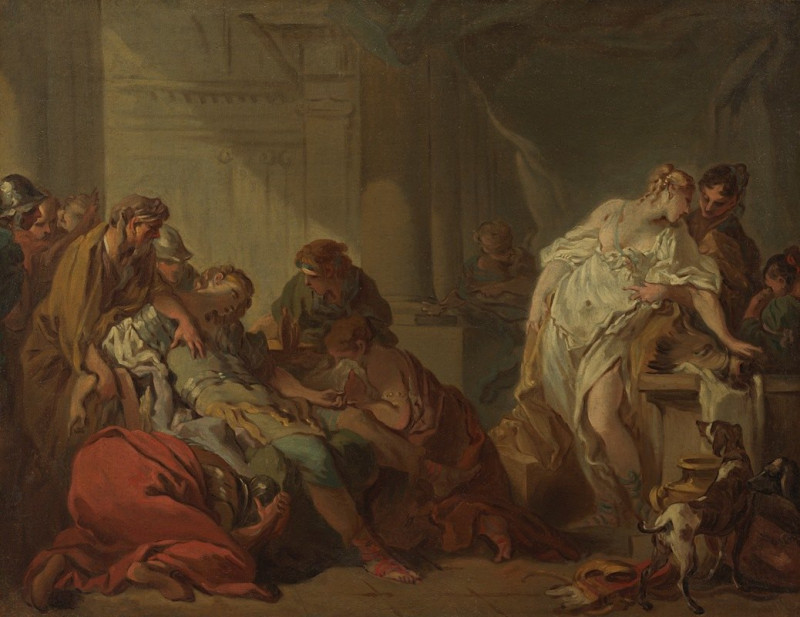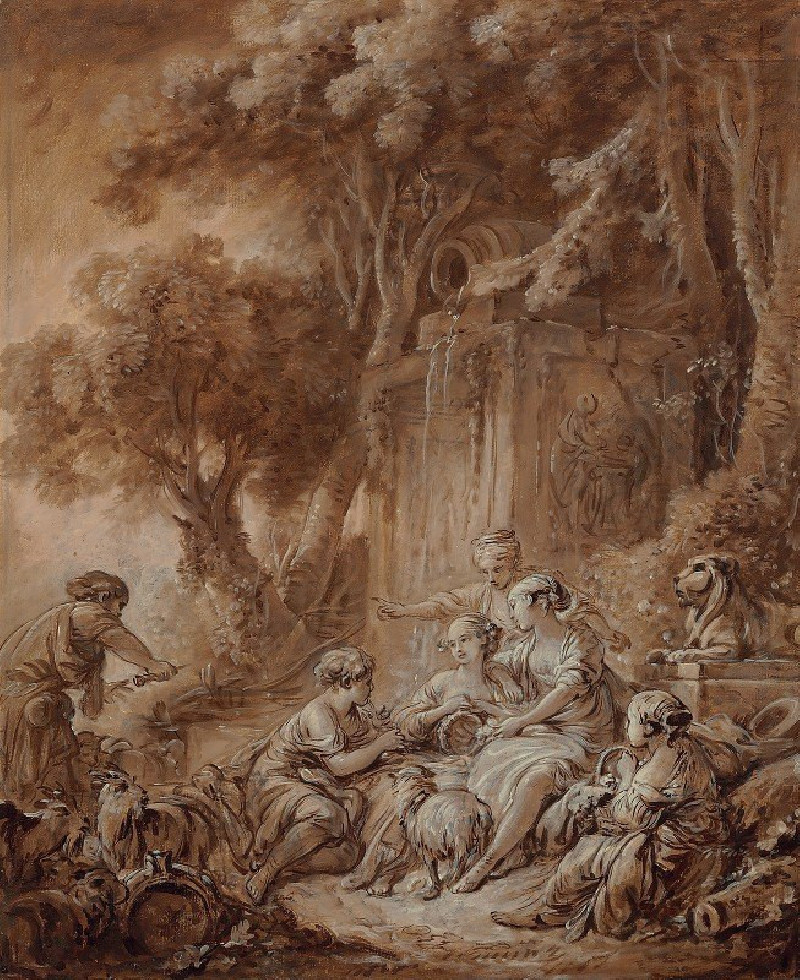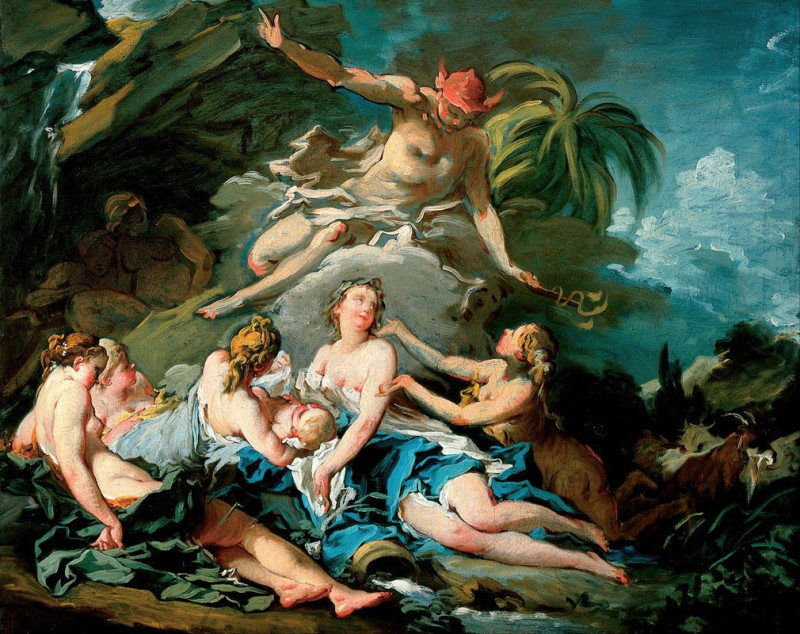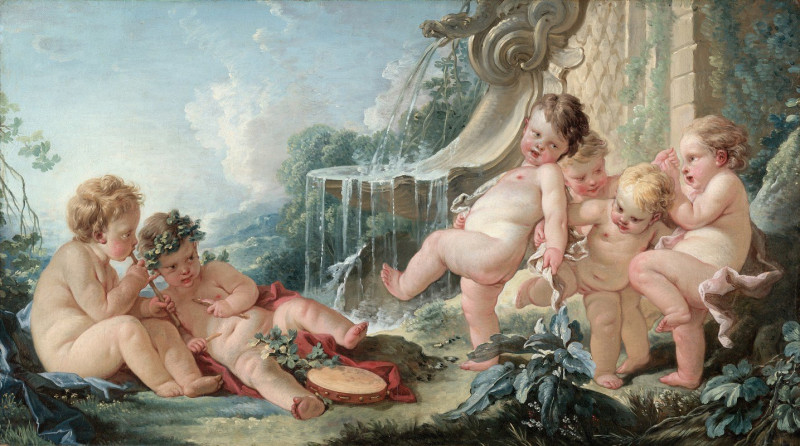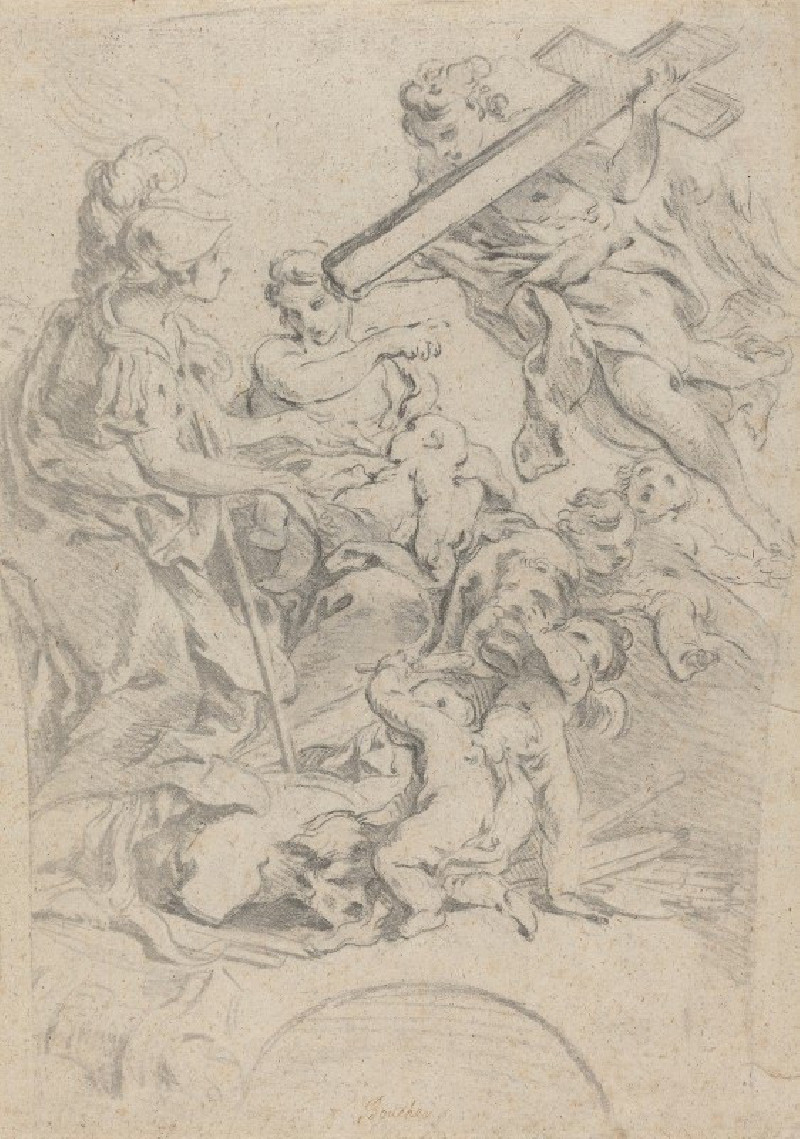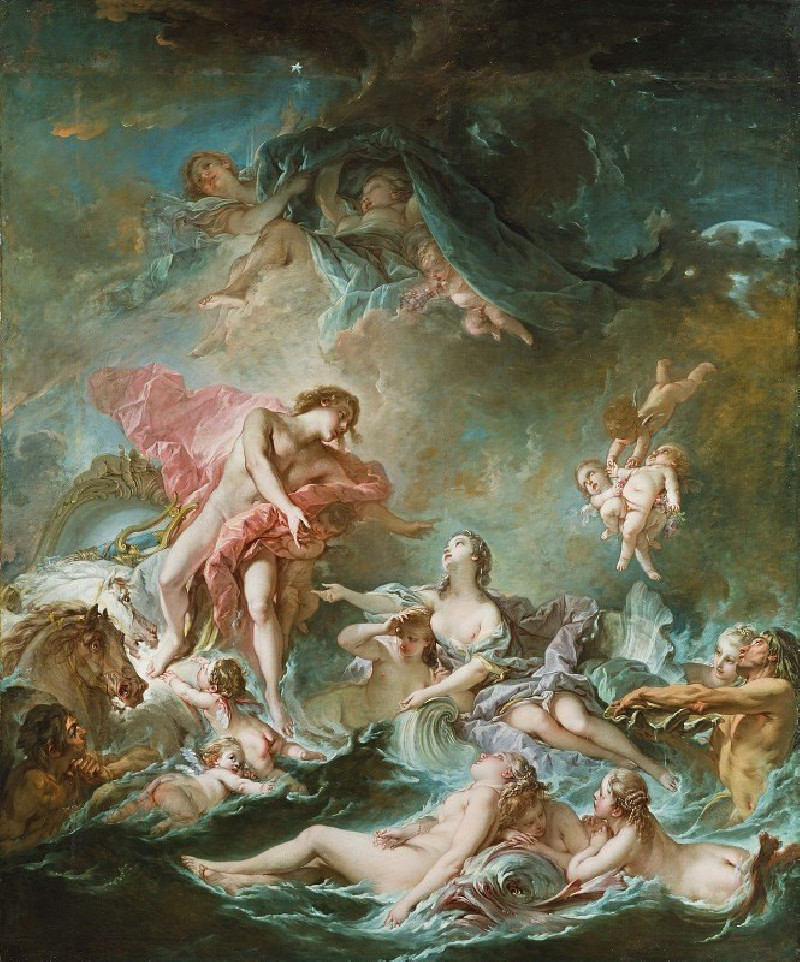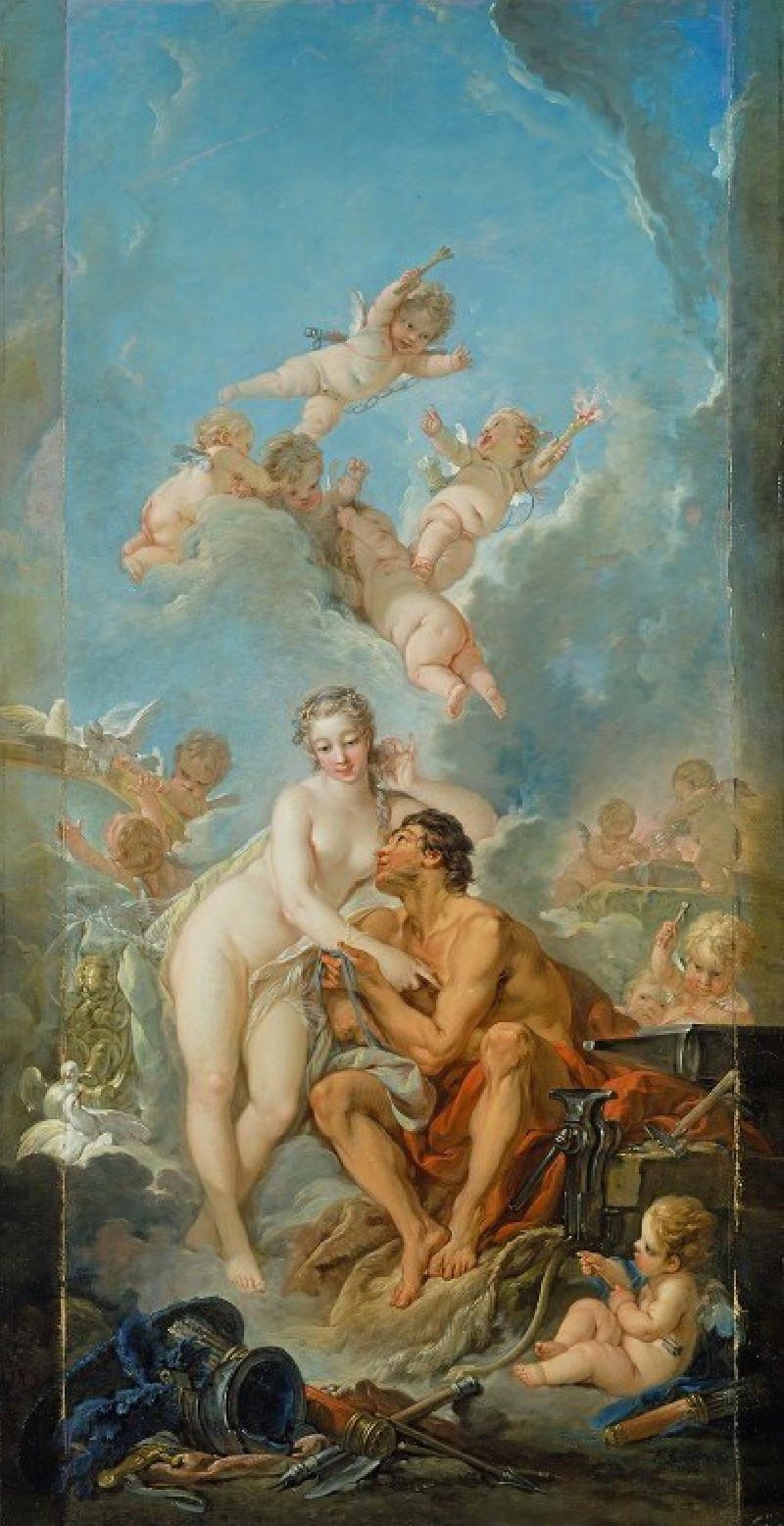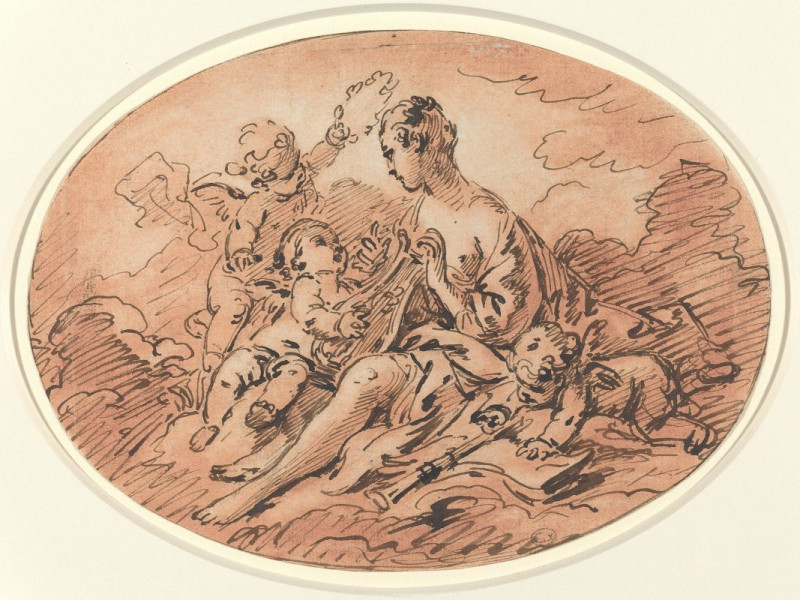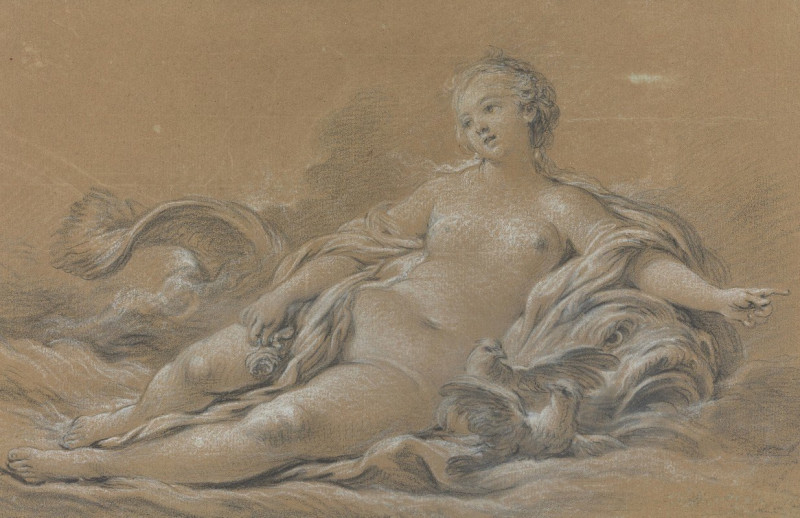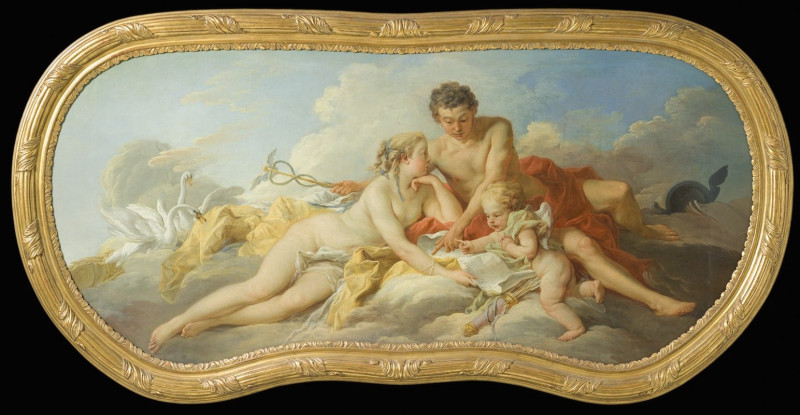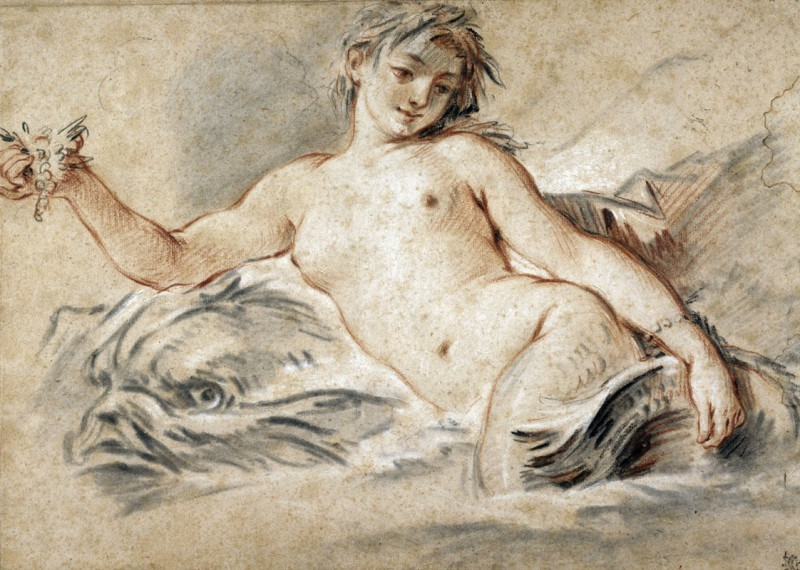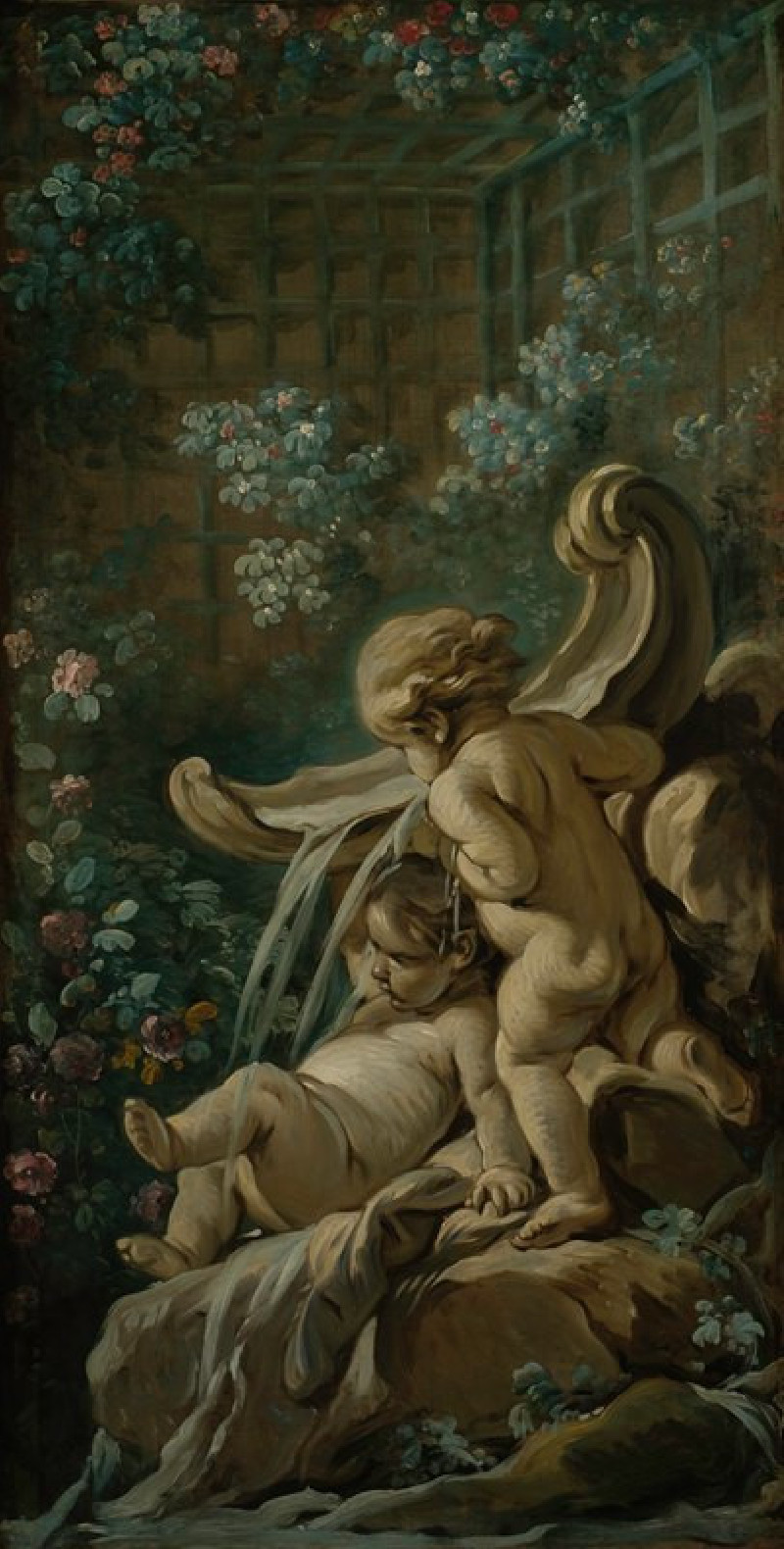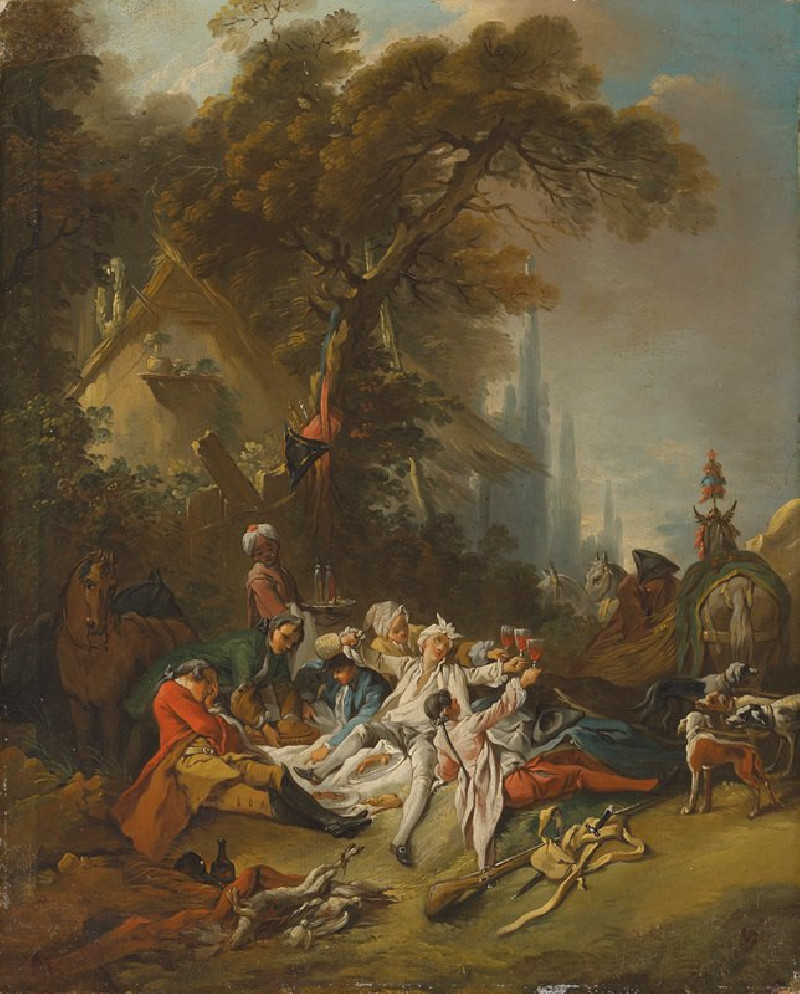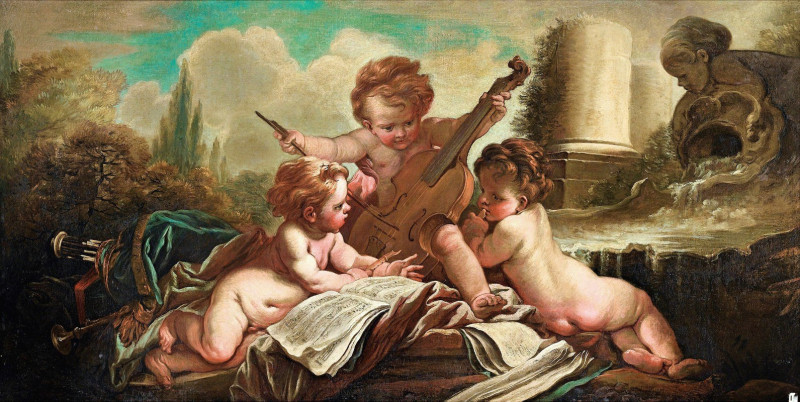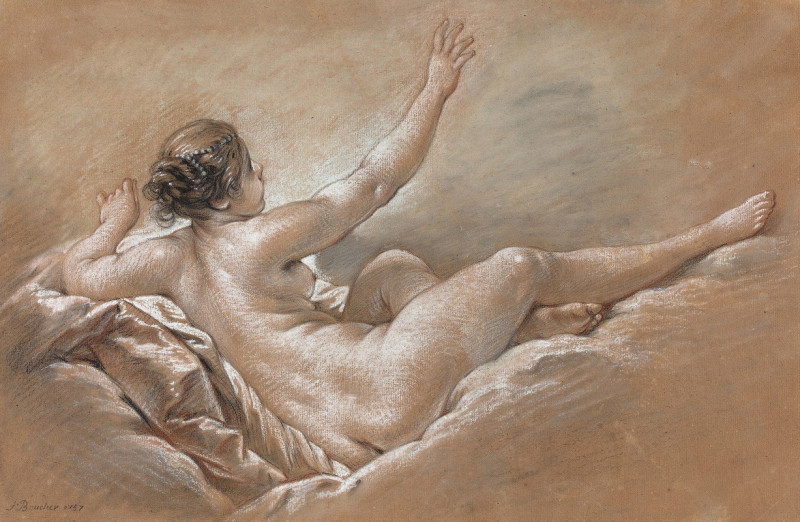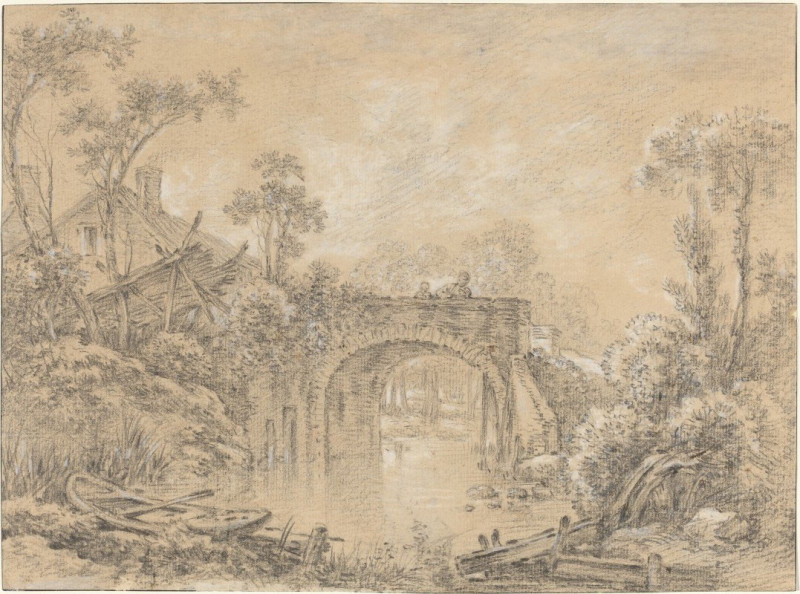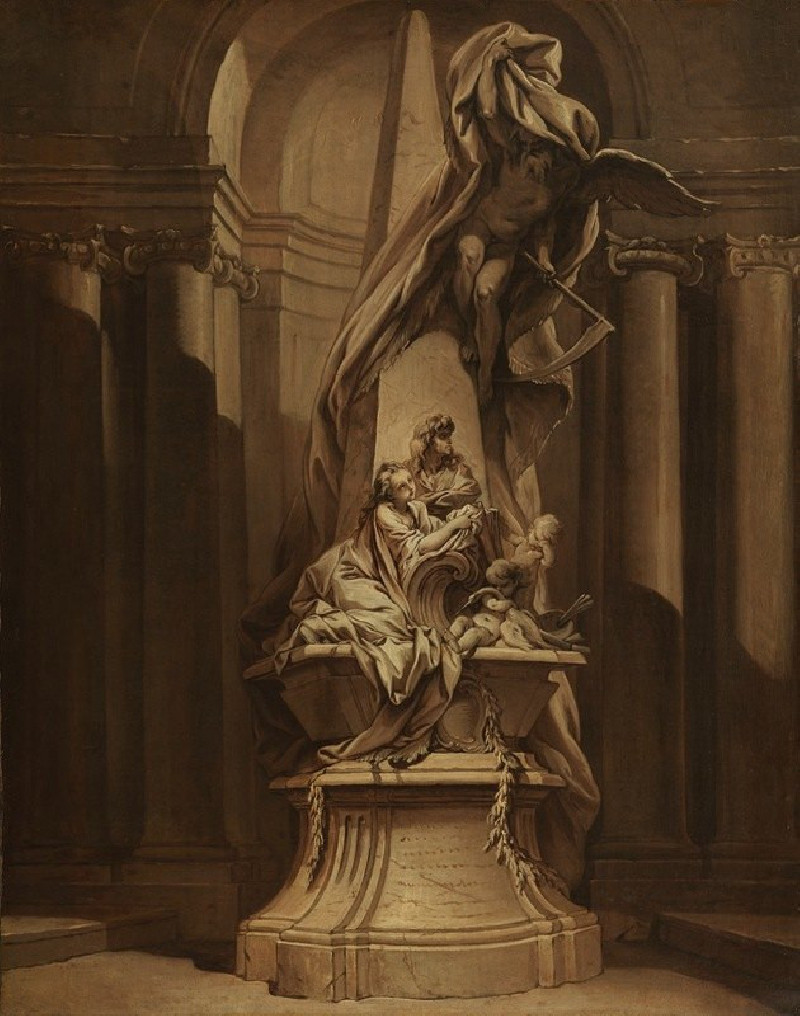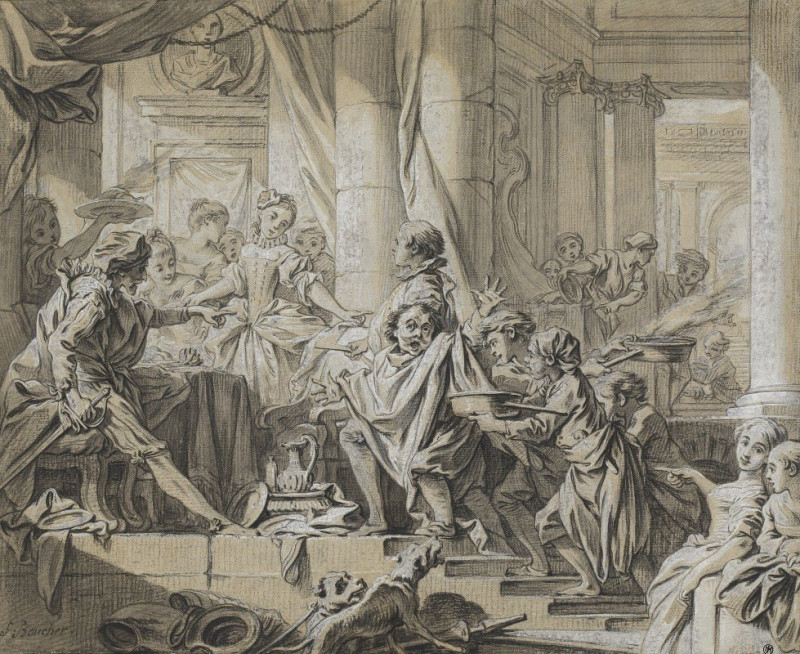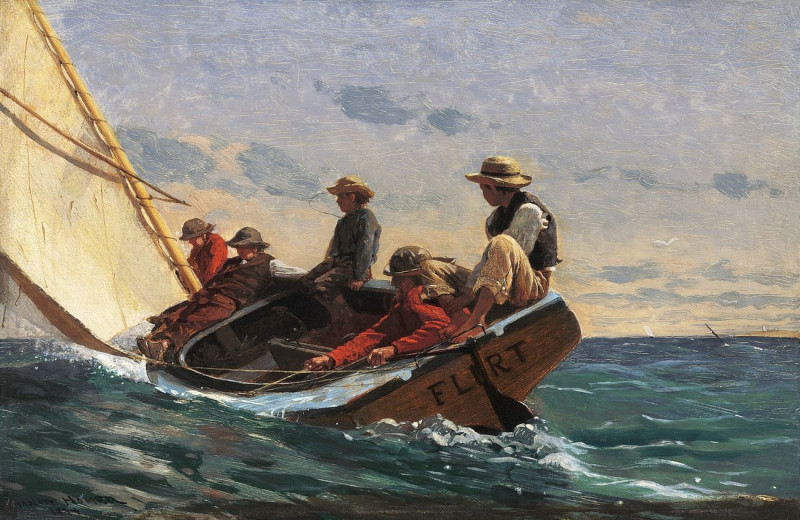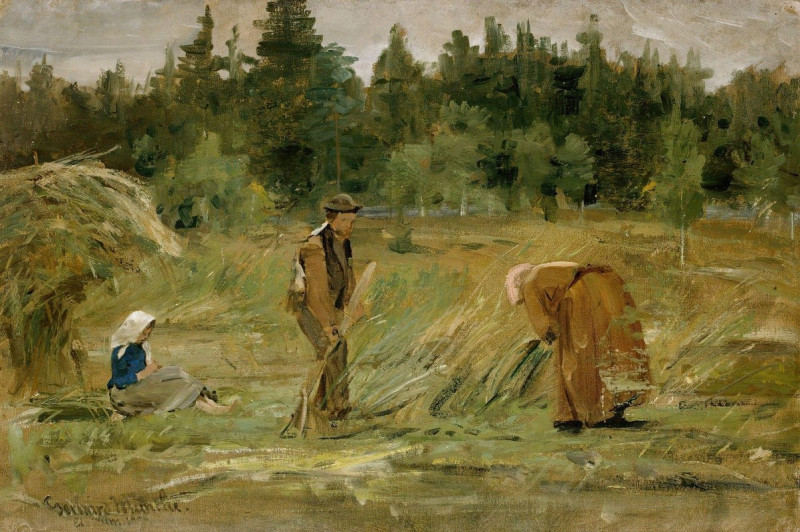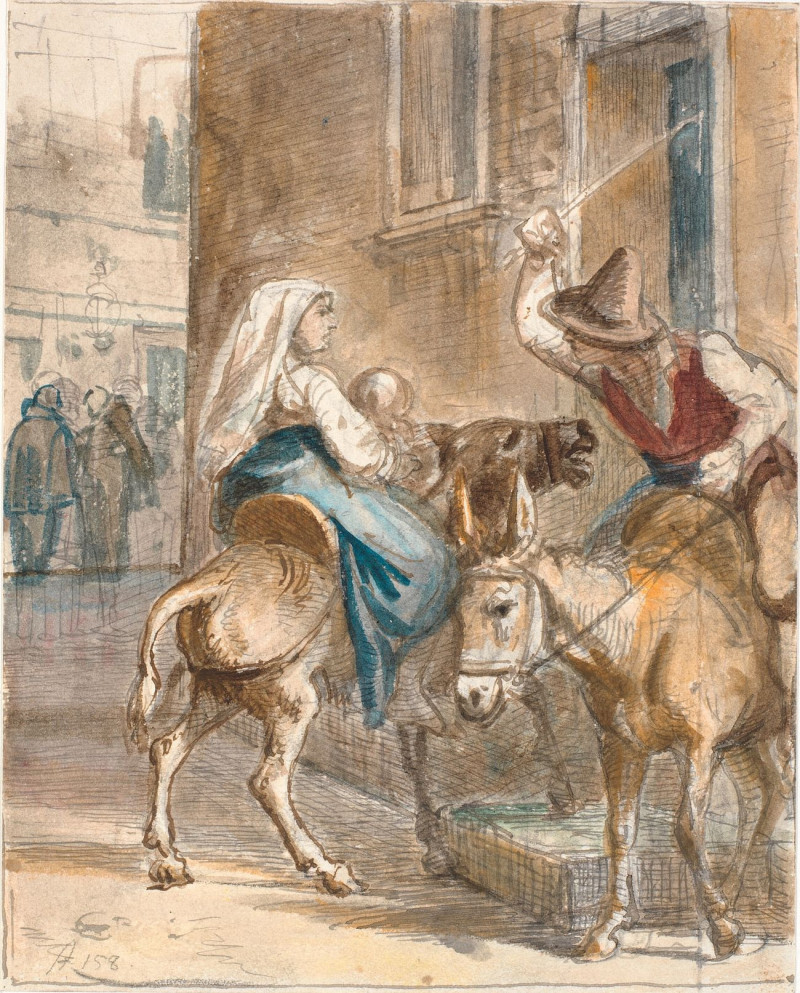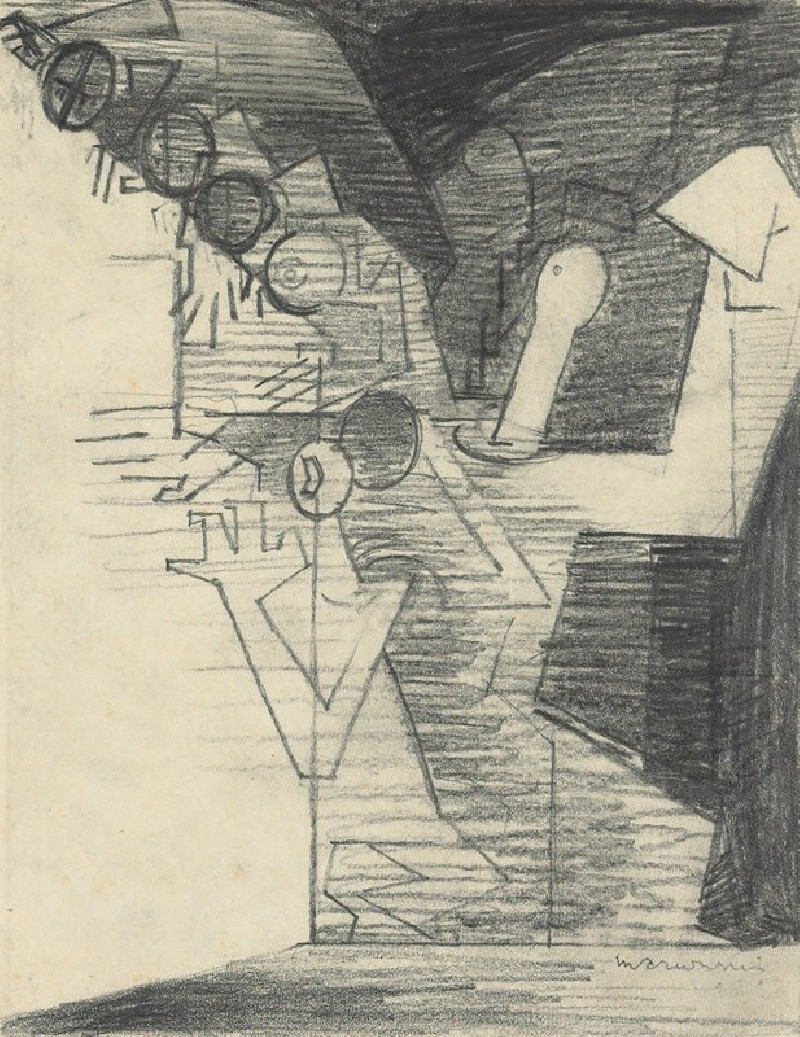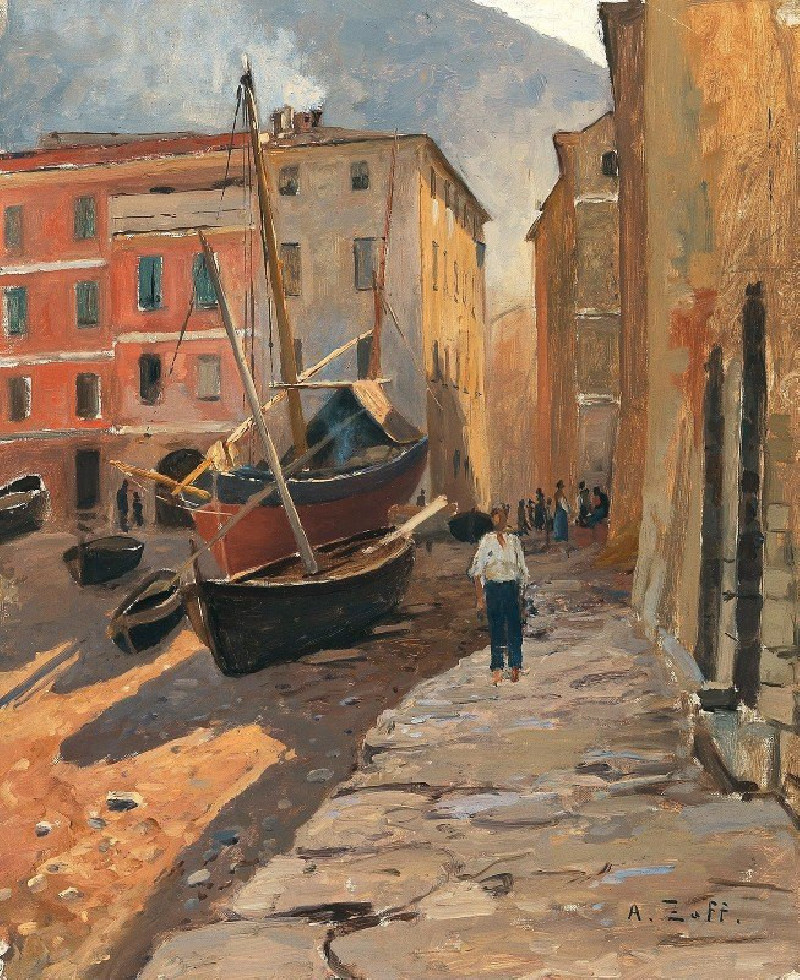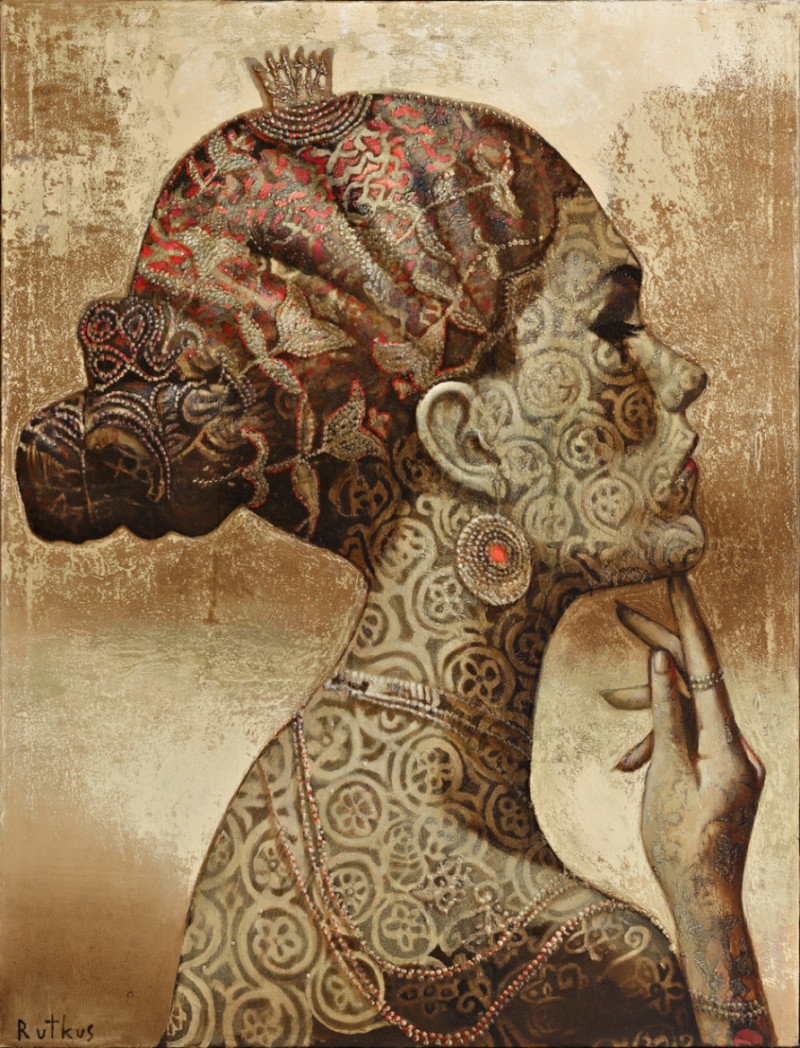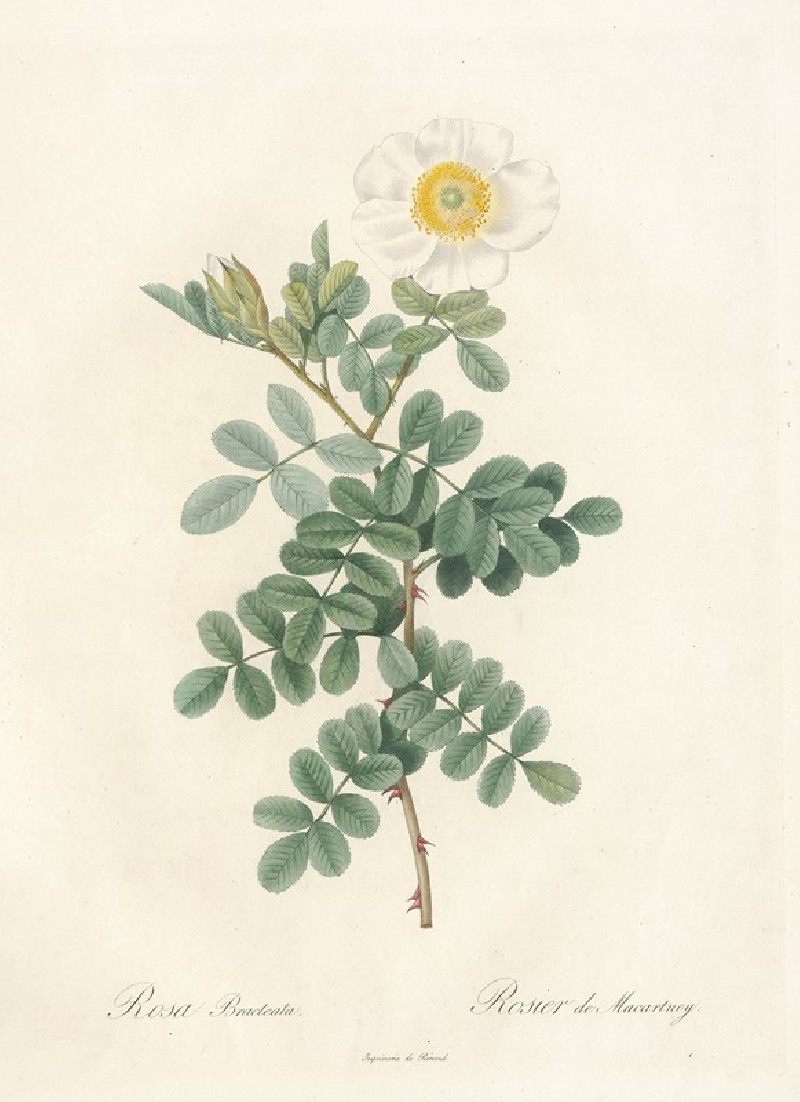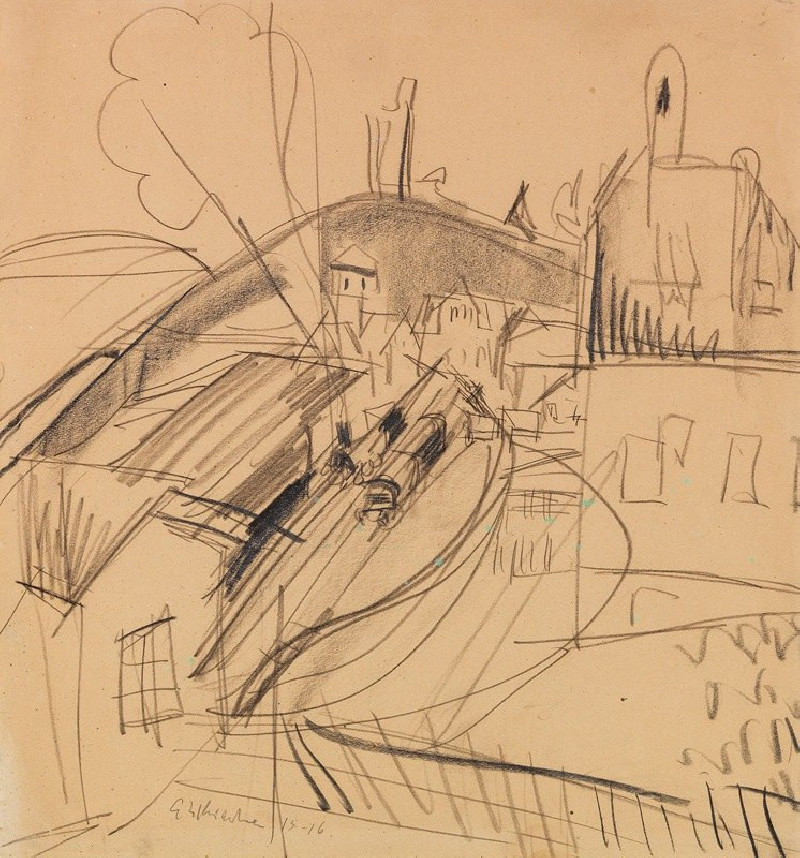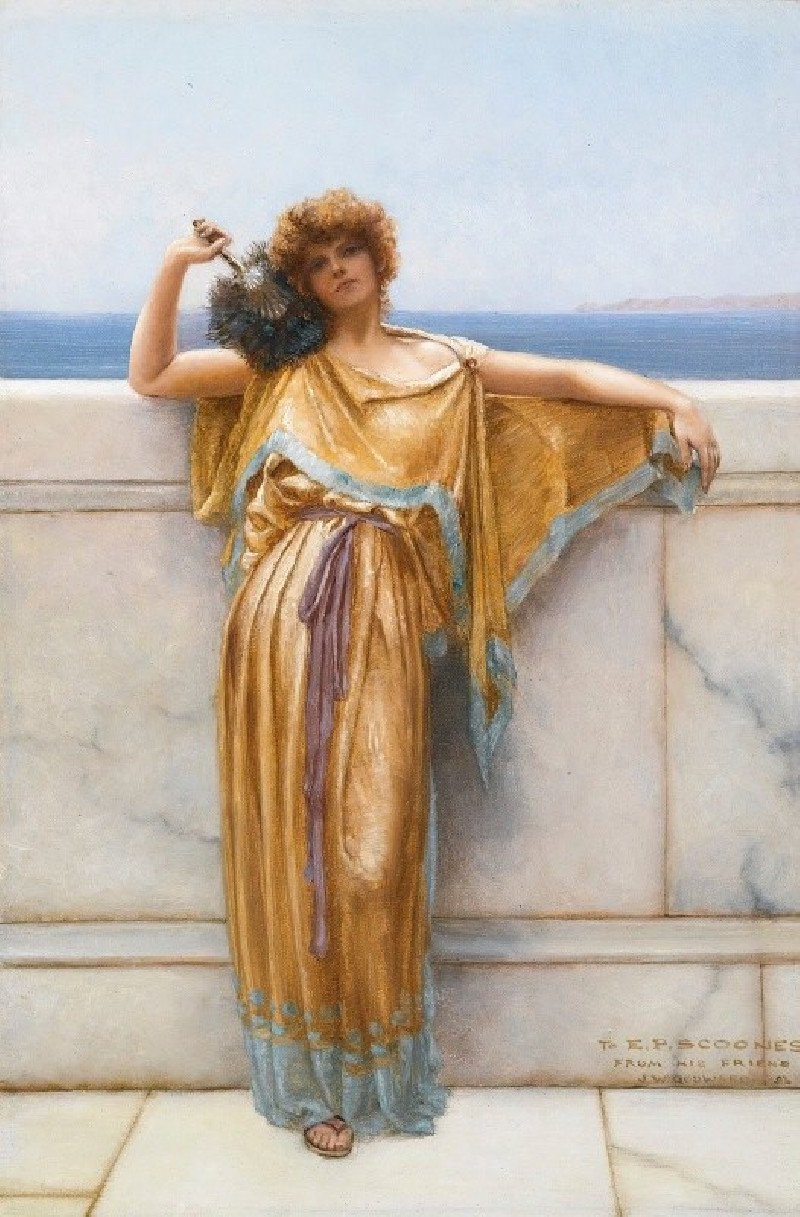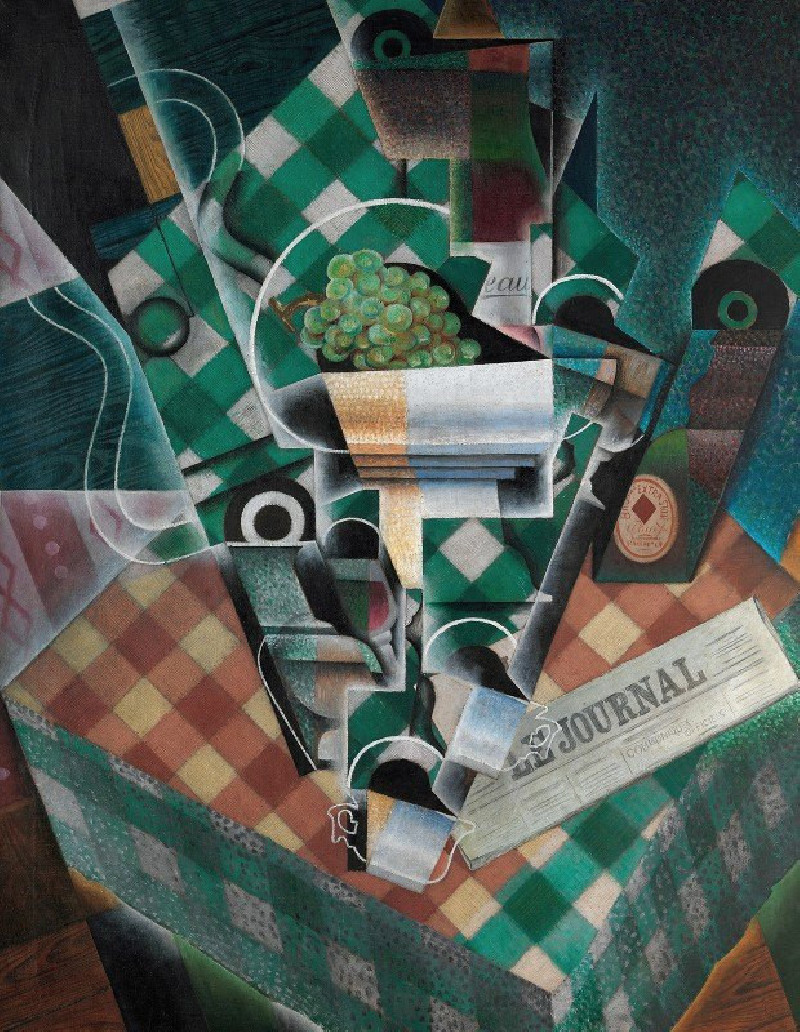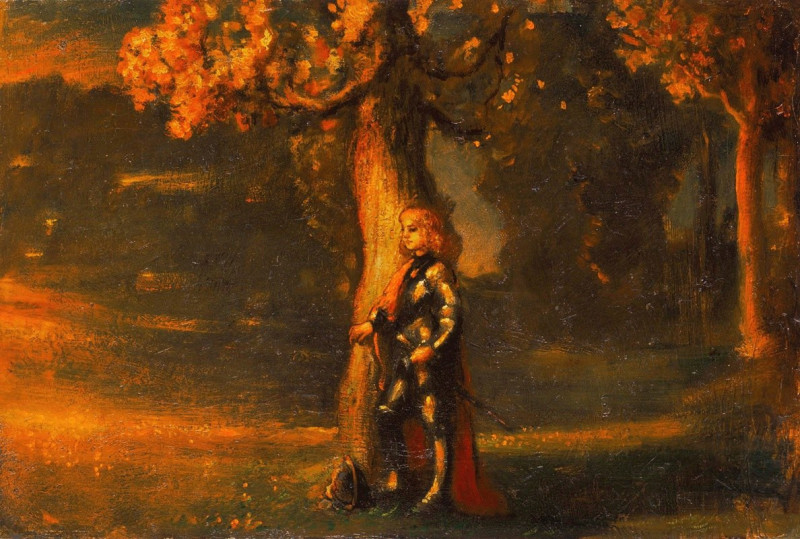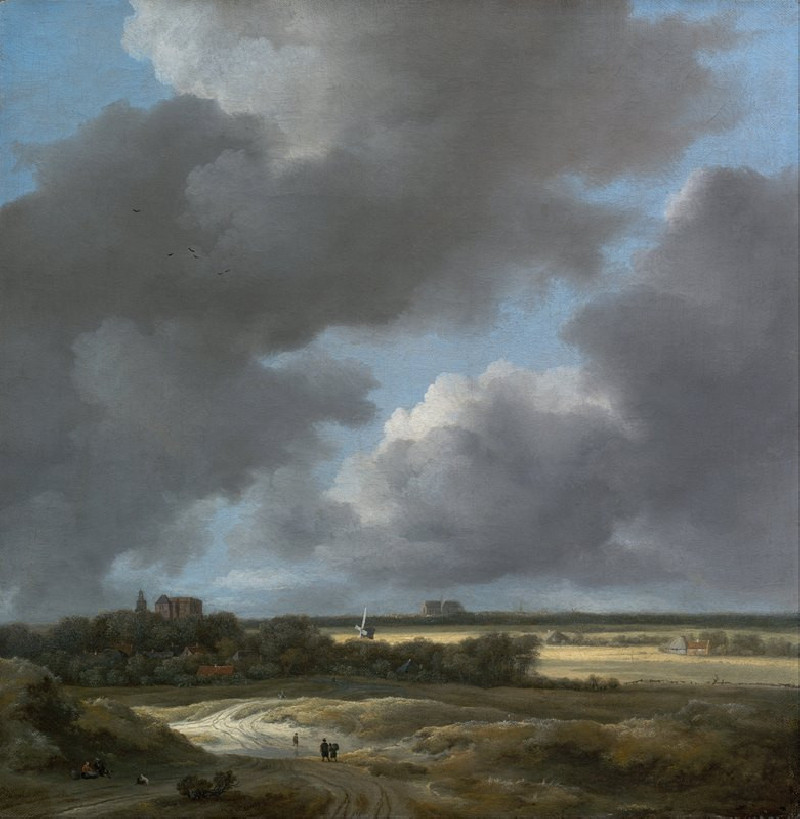Death of Meleager (circa 1727)
Technique: Giclée quality print
Recommended by our customers
More about this artwork
François Boucher's dramatic painting "Death of Meleager" (circa 1727) captures a poignant moment from classical mythology and displays the artist's mastery in blending emotion with elegance. The artwork portrays the tragic demise of the hero Meleager, a tale derived from ancient Greek mythology known for its rich narrative of fate, betrayal, and sorrow.In the painting, Meleager is depicted on his deathbed surrounded by figures overwhelmed by grief. The central figure of Meleager is rendered with a striking realism, his body languishing under the weight of his impending death as he gently leans into the lap of a woman, possibly his mother Althaea. This central scene of mourning is surrounded by various other figures, each expressing despair in their own unique way. Their faces, a study in agony and sadness, are depicted with great emotional depth.To the right, a woman bends forward in a dramatic display of sorrow, her hands clasped against her chest as she is comforted by another figure. The environment in which this intimate and tragic scene unfolds is dimly lit, suggesting the somber mood of the moment. Architectural elements and drapery add a classical aura to the scene, enhancing the theatrical and historical setting Boucher aims to evoke.This painting is a testament to Boucher's ability to convey deep emotions and narrative complexity. "Death of Meleager" not only illustrates a moment of human vulnerability and raw emotion but also serves as an exemplar of 18th-century French art, reflecting the period's interest in classical themes and the exploration of human sentiments.
Delivery
Returns
François Boucher (1703–1770) was a French painter, engraver, illustrator and printmaker. He was a proponent of Rococo and had a huge influence in spreading the style throughout Europe. His art was idyllic and voluptuous with a high-toned palette of blues and pinks. He created designs for all decorative arts, porcelains and tapestries. Boucher also painted several portraits including his patroness Madame de Pompadour. He is one of the most celebrated decorative artists of the 18th century.

